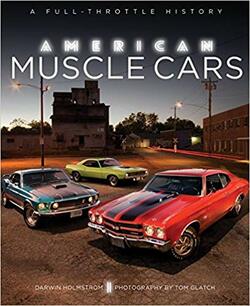 The aggressive horsepower wars of the 1960s came from manufacturers building increasingly powerful cars to snap-up baby boomer cash. They were a time without the EPA and safety-minded killers-of-fun strangling the performance of the muscle cars. Darwin Holmstrom, in his book American Muscle Cars, discusses the origins of the muscle car being marketed to the baby boomers, placing an emphasis on how muscle cars came to be, and evolved as a category of vehicles, before the beginning of the end of the classic muscle car in 1971, where muscle cars slowly turned into sporty-looking personal luxury cars. An example of this is the '81 Camaro Z28, with a 5.7L V8 producing a pathetic 190 hp, an increase over the previous year. Holmstrom gives a well-rounded history balancing information about the buyer market, the development of the cars, and their performance specs. The modern age is also covered, including the introduction of the sixth-generation Camaro and Mustang, along with the new Charger and the Challenger Hellcat, bringing levels of power double that of the classic era. American Muscle Cars provides a thorough history of the creation and evolution of muscle cars and is a must-read for anyone who loves power in its most raw and unrefined form, while encouraged for all others. "Real muscle cars don't have 19 airbags. Real muscle cars don't have traction control. Real muscle cars don't even have power steering or air conditioning. Real muscle cars don't run every driver input through a committee of computers before obliging said driver. Real muscle cars have big engines ... What more do you need?"
0 Comments
|
DanielI am a high-school student who enjoys almost anything mechanical; cars, robotics, drones, etc. I also enjoy plain driving, vehicle dynamics, and off-road trips. Archives
February 2020
Categories |
 RSS Feed
RSS Feed
